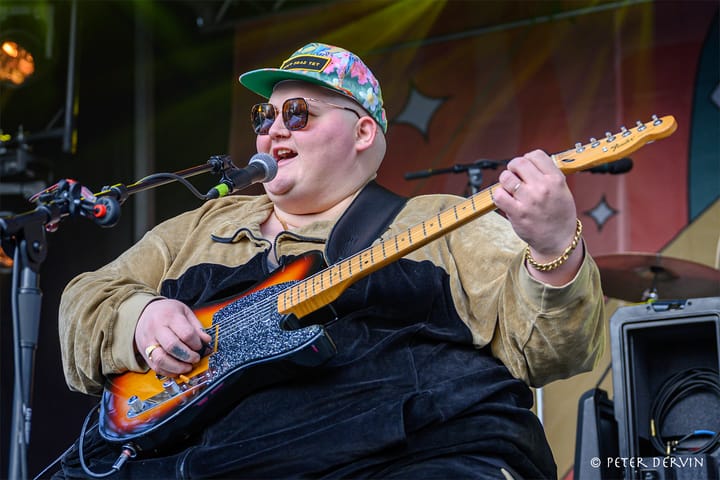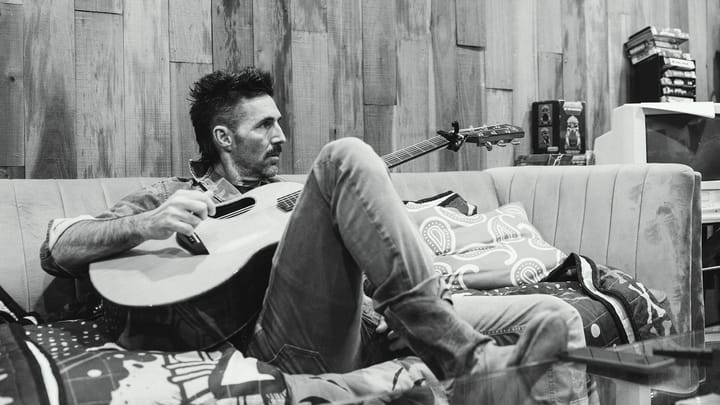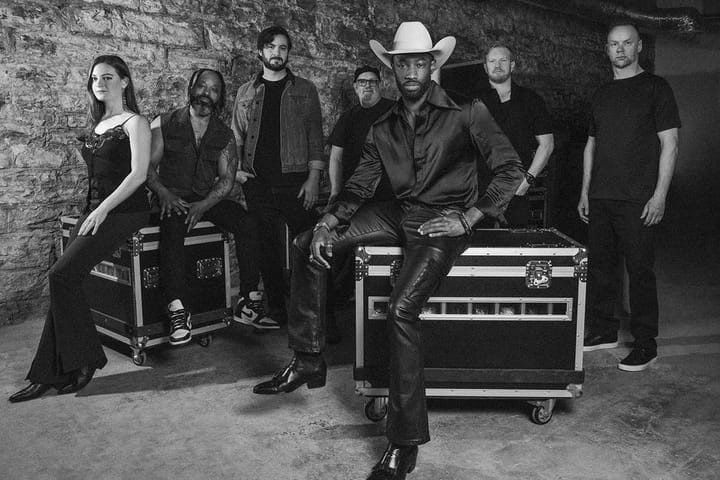Not long ago, fiddler Vassar Clements attended a concert in Nashville of the fictitious heavy metal band Spinal Tap. Vassar was called up onstage to jam. Not realizing that the band was a spoof, Vassar simply dove in and fiddled his heart out. He made real music and the audience loved it.
Another time, when Vassar had finished a recording session, this one in Los Angeles, he was invited to lay down a few tracks with a young group that was getting ready to record. Going with the flow, Vassar added his elegance to whatever was going on, only finding out later that he had just recorded with the Monkees. It was all just music to him.
My favorite Vassar stories, however, come from startled bluegrass musicians who recall a lanky fellow wandering up to their late-night jam sessions. Without introducing himself, or even tuning up, he would find the pitch, find the groove, and elevate the session beyond words. After awhile, he'd graciously thank the pickers, then wander on, leaving them with their jaws dropped and asking each other, "Was that who I think it was?"
Over a career that spanned five decades, Vassar Clements -- who died of cancer on August 16 at age 77 -- played on more than 2,000 albums, with such diverse artists as Bill Monroe, Paul McCartney, Linda Ronstadt, the Grateful Dead, Bruce Hornsby, Hank Williams Jr., Johnny Cash, Bonnie Raitt, Woody Herman, John Prine, Emmylou Harris, Kris Kristofferson, Earl Scruggs, and Jimmy Buffet. Oh yeah. And the Monkees.
In 1992, he recorded "The House Of The Rising Sun" as a fiddle duet with fellow virtuoso Mark O'Connor as part of O'Connor's Heroes album. O'Connor truly considers Vassar one of his heroes -- "most likely the best fiddler there ever could be," he says -- and a strong influence on him, both musically and personally. He recalls first hearing Vassar on the 1972 album Will The Circle Be Unbroken, when O'Connor was 11 years old. He was blown away to the point of taking the album to bed with him at night and tucking it under his pillow while he slept.
Vassar's journey began on April 25, 1928, in Kinnard, South Carolina. His family moved to Kissimmee, Florida, where Vassar spent his childhood. He first picked up a fiddle at age 7 and, self-taught, played his first gig at age 14. He told O'Connor that one of his early influences was a blues musician who would come by his house. Vassar also listened to big-band jazz artists such as Glen Miller, Les Brown, Harry James and Artie Show. And, of course, there was the Grand Ole Opry.
In 1949, Vassar began a seven-year stint as fiddler for Bill Monroe & His Blue Grass Boys. He performed with Jim & Jesse and the Virginia Boys from 1957 until 1961, before dropping out of the music business for several years. He worked at the Kennedy Space Center as a plumber, spent time in a Georgia paper mill, was a switchman for the Atlantic Coast Railroad, sold insurance, and had a potato chip franchise.
In 1967, Vassar moved to Nashville and returned to full-time fiddling. He landed a job with Jimmy Martin & the Sunny Mountain Boys before hitting the road with Faron Young. In 1971, Vassar began a musical friendship with John Hartford, a pairing that took Vassar's music to an entirely new audience. That year, Vassar played on Hartford's quirky and powerful Aereo-Plain album, along with Norman Blake and Tut Taylor. This led to a stint with the progressive Earl Scruggs Revue, and, in 1972, to a phone call from the Nitty Gritty Dirt Band.
Dirt Band member John McEuen recalls that the band was pulling together musicians for Will The Circle Be Unbroken, and when they asked Earl Scruggs to recommend a fiddler, Scruggs pitched Vassar. When McEuen asked if Earl thought Vassar could cover all the bases, Scruggs said, "He'll do." Vassar's fiddle showpiece on the album was "Lonesome Fiddle Blues", which became the template for the Charlie Daniels Band's hit, "The Devil Went Down To Georgia".
It also began an amazing run for Vassar, as he quickly ascended to the elite of the recording industry, logging countless sessions with a virtual who's who of American music. In 1973, he signed a solo record deal with Mercury/Polygram and went on to release 28 solo albums in a wide range of styles. His only solo bluegrass release, Grass Routes, was released by Rounder in 1992.
My personal favorite Vassar recording, and the lightbulb moment for my own appreciation of this musical giant, was the 1974 Flying Fish LP Hillbilly Jazz. I was a sophomore in college and was working as a volunteer at the campus radio station. I can recall clear as day when the music director handed me this red-and-black album with a stylized drawing of a train on the cover. He chuckled through his nose as he thrust it in my direction and grumbled something to the effect of, "We'll never play this." I took it back to my dorm room and entered a new world.
The music careened from Bob Wills to Benny Goodman to Fred Rose to David Bromberg, and was like nothing I had heard before. It combined swing, blues, jazz, country and folk in a way that was entirely fresh for me, and Vassar was right in the middle of it. Other players included guitarists David Bromberg and Sam Pruett, drummer D.J. Fontana, steel player Doug Jernigan and piano player Benny Kennerson. Vassar's fat tone, fluid improvisation and impeccable taste brought me back for dozens, maybe hundreds, of listens.
After that recording, Vassar referred to his own musical style as "hillbilly jazz," acknowledging his country roots and his free-flowing vision. As O'Connor points out, though, labels are irrelevant when it comes to Vassar's music. What is important is that Vassar showed us a way to play that left room for everyone at the table. He was an amazing talent.




Comments ()